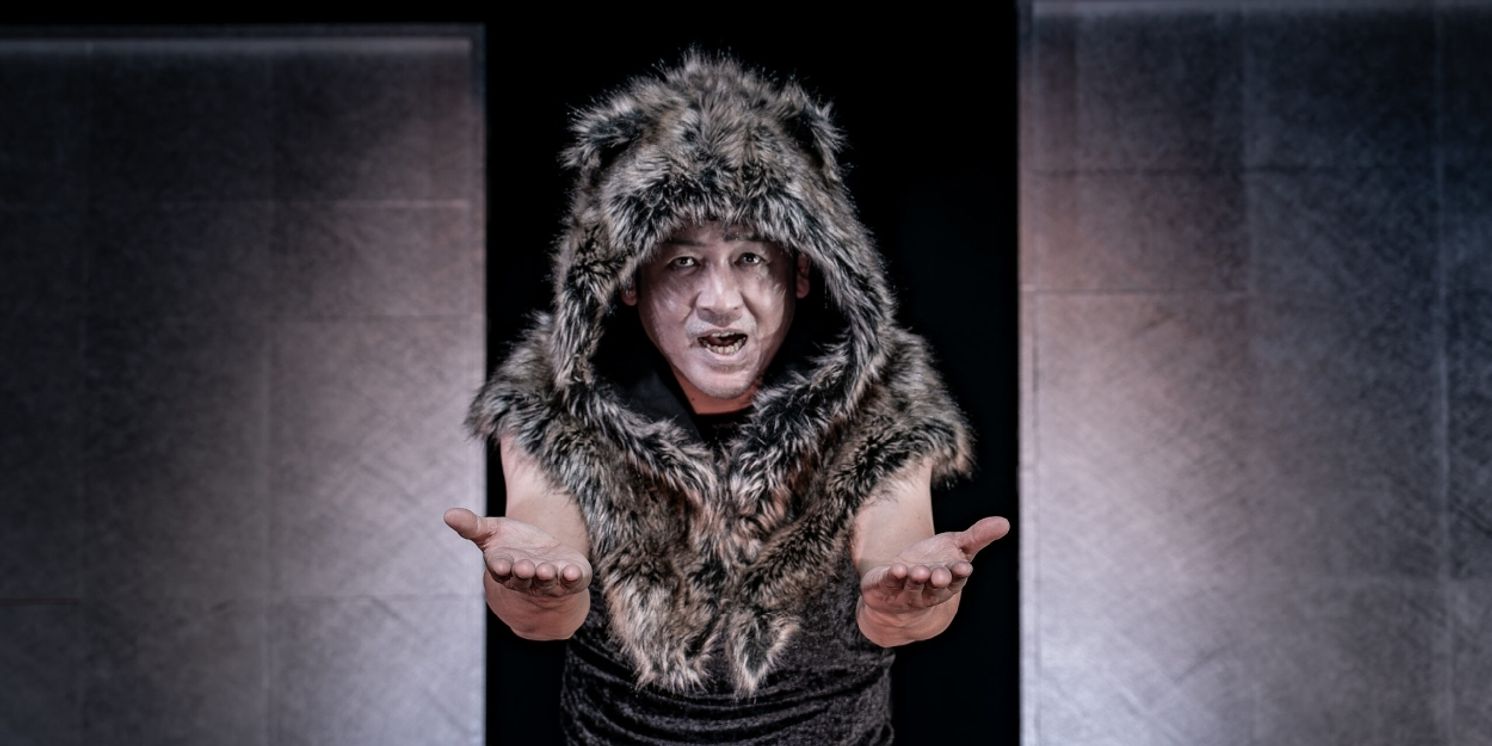Review: MUKASHI, MUKASHI at The Theatre Centre
Fusion of Japanese-American media unleashes the wolf inside.

Who’s afraid of the big, bad wolf?
In MUKASHI, MUKASHI (ONCE UPON A TIME), that ever-dangerous wolf is as likely to make you laugh as scream. Blending elements of North American and Japanese storytelling and mythology, the hour-long dance piece by Toronto’s CORPUS in association with Japan’s The Kio Company explores versions of Little Red Riding Hood and The Gratitude of the Crane through influences as diverse as Looney Tunes and Bunraku theatre.
Both hilarious and contemplative, purposefully veering wildly in tone, the piece recalls this year’s Fringe Festival hit from Japan, Are You Lovin’ It?, in its anarchic, playful energy and slightly warped fusion of Western and Japanese cultural touchstones. In a contest between the hungry, unstoppable id of the wolf and the thoughtful, selfless superego of the crane, the audience comes out the winner.
Performed in Japanese and English with English and French subtitles, the show is broadly accessible to a wide range of viewers. The irreverent nature of the piece starts from the top, with four snarling wolves (performers Kohey Nakadachi, Sakura Korin, Takako Segawa and Kaitlin Torrance), complete with bushy tails, slowly being illuminated by a moving spotlight that goes from stage lighting to moon in an instant. Sensing the change, the wolves howl, their shadows forming silhouettes against the back wall and the three rolling, bamboo-themed paper screens that make up much of Yann Becker’s set.
This symbolism and playful inventiveness is characteristic of David Danzon’s direction, which provides so many visual surprises that one is torn between describing them with glee and not wanting to spoil them. Calligraphic characters come alive, trees dance with shapely legs, and an anime-style Red Riding Hood puppet with an actor inside that gives true credence to the phrase, “what big eyes you have!” Costume Designer Atsuko Kiyokawa works overtime in a variety of instantly recognizable styles.
The madcap dances with wolves portion is consistently funny, from a sketch where an elderly woman (Segawa, shuffling back and forth in indecision) shuts out the whining wolf (Nakadachi, who gradually sounds more and more like a frustrated toddler with fangs) who maintains that he’s changed for the better, to a talk show segment presided over by a grinning, besequinned host that’s half Japanese music video and half Jerry Springer. The wolf’s widow, kitted out in leather corset, faux-apologizes to “Pinky” and her grandmother, still attached to an IV bag, while the host holds up the kanji for “applause.” And then things get really manic, over a bright soundtrack by Anika Johnson.
After the madness of the wolves, the story of the crane’s generous gift to a rescuer who doesn’t fully appreciate her sacrifice provides a compellingly meditative ending, using a beautiful smoke effect that makes the floor seem like clouds and a delicate white costume with flowing sleeves for crane wife Torrance.
Because the show is split in its exploration — one half wolf and one half crane — the second half winds up feeling less cohesive than the first, with fewer, slower segments, particularly because it largely drops the humour that propels the initial pieces. As well, as there are so many takes on the Big Bad Wolf story, it’s hard to avoid a slight stagnation in the repetition even with their wildly creative nature. A back-and-forth between wolf and crane segments, rather than showing first one and then the other, might have heightened the juxtaposition between the two and made the opposing themes clearer. However, this is a small quibble with an ultimately successful and immensely entertaining performance, fueled by an energetic cast that’s equally comfortable with mania and contemplation.
Carolyn Linder’s art exhibit in the theatre lobby adds much to the experience of the show, with its beautiful installations of origami and round bubbles of artwork featuring masks, ornately printed paper, and explanations of some of the Japanese theatre techniques used in the show. Echoing sections where the dancers construct the paper forms, audiences can also fold their own cranes, or participate in a dress-up station to become the wolf of their dreams. It’s a tempting proposition to surrender to the beast inside; cranes may be graceful, but wolves have more fun.
Photo credit: Yoshikazu Inoue and Igaki photo studio
Reader Reviews
Videos

